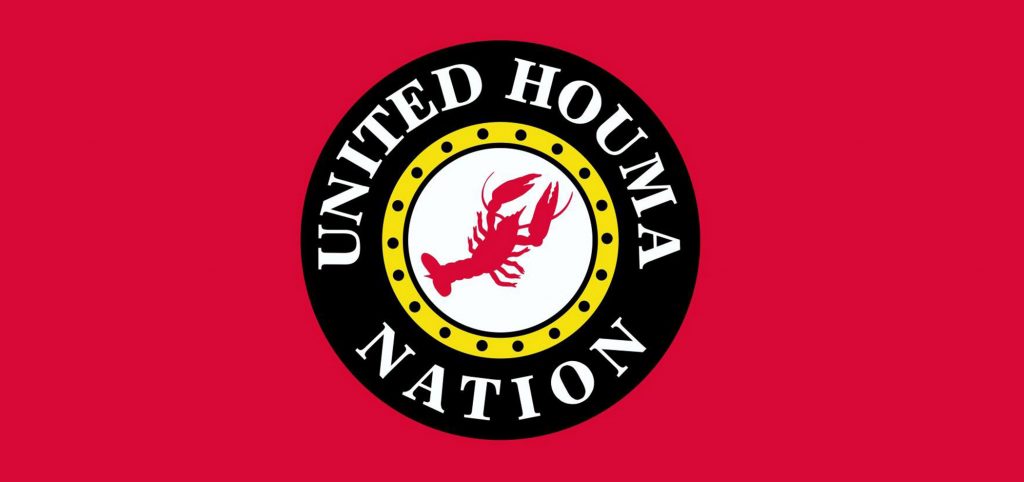Tribal Government

By hannah orgeron, staff writer Within the United Houma Nation, a system of government has been created. This system is not only important to keep the peace between the people, but it acts as representation for the citizens when they cannot fight by themselves. This system includes the chief, who is currently August “Cocoa” Creppel. “A government body within the tribe is very necessary,” he says. “You know we have almost 19,000 people spread out between six different parishes, and you have to have a good government representing each area and district so it’s very important to have a council of 11 people representing these areas. We come together to do what is best for the tribe.” Under the chief, the council then elects a vice principal chief, currently Donny Verdin. “Anyone can run for a position on the council,” he says. “In order to be a chief, you have to have experience being on the council though. We hold elections every four years and people run for the positions they desire. Both the chief and the council are elected to office every four years, but the chief can only do two terms. However, the council has no limit once elected.” According to the constitution of The United Houma Nation, within the government system there are different roles that make it most effective. Such as principal chief, vice principal chief, secretary, treasurer, parliamentarian, sergeant-at-arms, and the duties of committees or appointed officers. The positions of vice principal chief, secretary, treasurer, and parliamentarian are filled by citizens the tribal council nominates from within. However, the sergeant-at-arms and any other committee member are picked from out of the council and are not allowed to vote at Tribal Council meetings. Anyone can be on the Tribal Council as long as they are 25 years of age, reside in the district they are running for, have a high school equivalent diploma and do not have a criminal record. However, in order to run for chief one must be 35 years of age and have prior experience on the Tribal Council along with following all of the rules for being elected to tribal council. Tribal Council and chief positions are determined by majority vote. Creppel says he feels he is lifting his people up from the bottom, instead of being on top because he is chief. “I was told, you’re the chief, you’re on top, but I feel as I’m not on the top I’m on the bottom lifting my people up, not on the bottom holding them down,” he says. “I feel that it is my position to lift my people up whenever I can and to represent my elders to get them the representation for leading the way and also for our children who are our future.” PODCAST Chief Cocoa Creppel discusses the United Houma Nation government. Garde Voir Ci · Season 4, Episode 6 – Governing with Chief Cocoa Creppel The Lost Bayou · Season 4, Episode 11 – The Tribal Council with Jason Trosclair
The Challenge of Getting an Education

By hannah orgeron, staff writer Getting an education was challenging and complicated for the members of the United Houma Nation. “We weren’t treated right when I was growing up,” says Jeanette Billiot, a citizen of the United Houma Nation. “We were treated like outcasts.” Instead of being allowed to attend the parish’s main schools, the tribe was forced to open their own. Many of the schools were segregated and built from small houses. What is now known as the Montegut Community Center was an elementary school located in Montegut, Louisiana. The high school, known as Daigleville High School in Houma, didn’t open until later. Billiot, who attended the Montegut Community Center, says she started in first grade, but when she went to begin seventh grade, there was no teacher available. So she just did sixth grade again because she was not old enough to stop attending school. The Daigleville School served as a Native American-only high school for the students of Terrebonne Parish. According to the United Houma Nation’s website, segregation ended in schools in 1964 because of a successful lawsuit against the school board. Helen Duplantis, another tribal member who attended segregated schools, says there was some good. “One good thing was that we were able to speak the French language,” she says. “Other people couldn’t speak French at other schools. It was our primary language and we learned English from teachers.” To provide schooling during a time of segregation, the leaders in the Methodist church created a school for the Indigenous children of the area in an old dance hall, according to the “The Mission Story of the Dulac Community Center.” The first class was held in the building that is now the Dulac Community Center, on Oct. 1, 1932. The school soon became a place of community. It allowed clubs and groups to participate in things that were unique to their interest as well as a place to go when they needed support or friendship. In the end, Billiot says they forged their own educational path. “We do it our way and we do what we can.” PODCAST SERIES: a look at education within the United Houma Nation. Garde Voir Ci · Season 4, Episode 2 – Education with Charlie Duthu Garde Voir Ci · Season 4, Episode 3 – Education with Evelyn Jarrell Garde Voir Ci · Season 4, Episode 5 – The H.L. Bourgeois Legacy with Charlie Duthu an education Timeline 1840 First white school in Terrebonne Parish 1917 H.L. Billiot from Dularge filed suit against Terrebonne Parish School Board Lost – Appealed 1918 Supreme Court of Louisiana- Favored Terrebonne Parish School Board April 29, 1918 1922 Houma Methodist Church began educating Native Americans in Dulac 1930 Terrebonne Parish School Board opens adult illiterate schools and the first Indian School in Dulac 1932 Opened Methodist Mission School Mrs. George Deforest and Miss Wilhelmina 1936 Methodist Mission School expands to other bayou communities Mary Beth Littlejohn 1938 Terrebonne Parish Records show 262 Native Americans in school 1952 Indian school built on lower Pointe Aux Chene Children traveled by boat 1959 Indian students attend Daigleville School 1962 First Indian high school graduates 1967 School integration in pictures The outside of the Montegut Community Center. This is where Mrs. Jeanette Billiot attended school in the 1960s when it was an elementary school. She said it was only a few houses away from hers and that she would walk to school every day. This is where she attended 1st to 8th grade A class photo of the older class that attended the Golden Meadow Settlement School in 1951. Many of these people have yet to be identified in this picture. This picture is on display at the South Lafourche Public Library in Galliano. A class photo of the younger class that attended the Golden Meadow Settlement School in 1951. Just like the older class, many of these students have yet to be identified. This is on display at the South Lafourche Public Library in Galliano. Carl and Mildred Brunson (right) with the youth group that they established when they converted the Dulac Mission Center into a Community Center. They assisted in establishing more clubs unique to the interests of the students. They created a more diversified program for the community. The Mission Story of the Dulac Community Center PDF found from the Archives Bill Turner teaching a class at the Dulac Community Center. Bill and Relta Turner Started at the Dulac Mission Center in 1951 right out of college. Mrs. Relta Turner taught Kindergarten and first grade, and Bill taught 4th,5th,6th, and sometimes 7th grade. – The Mission Story of the Dulac Community Center PDF Younger students of the Dulac Community Center attending class. This photo was taken from Carl and Mildred Brunson’s photo album. Dulac Area 1953-1963 Older students of the Dulac Community Center attended class. This photo was taken from Carl and Mildred Brunson’s photo album. Daigleville School is located in Houma and is to be the future office of the United Houma Nations. The school was a Native American only high school during the time of segregation until 1964.
An Unspoken Language

By Madeleine Bauland, Staff Writer Language affects relationships and how people communicate. For the Houma, their language brings people closer together and strengthens tribal community ties. It is one of the biggest parts of their culture. The language of the Houmas, Uma, is part of the Western Muskogean family of languages and was unwritten. Since colonization, the community has spoken French and English. Reclaiming their language is vital to the Houma people because many of them have migrated and are not in their homelands anymore. They reside in all different locations across the United States and even globally. Because the language has evolved over time, it is important that the people of the Houma Tribe continue to hold on to it. Ben Wood, a member of the Houma Language Project, a group of volunteers dedicated to preserving Houma language, says language is tied to the tribe’s identity and those who speak it can feel physical benefits. It reduces stress levels, creates a healthier community and can help members achieve a better life outcome. “It definitely has a positive physical impact,” Wood says. There are also words in Uma and other Western Muskogean languages that have no English equivalent, he says. Those who still speak it are preserving the culture, and the deep meaning it holds is unlike any other language. Colleen Billiott, a member of the United Houma Nation and co-founder of the Houma Language Project, says that the work she does is important to her because of how it deepens her connection with family members whose example she learned from. “I am continuing to work off the foundation of what my pawpaw did for the tribe and what my great grandparents left behind like the recording of my great mawmaw, Elvira, singing in the Houma language” Billiot says. “That to me gives me so much meaning. That’s powerful. Being Houma, I know who I am, and I have pride in who I am.” The Houma Language Project Learn More PODCAST Hali Dardar, co-founder of the Houma Language Project, discusses language. Garde Voir Ci · Season 4, Episode 1 – The Houma Language Project with Hali Dardar Houma (Uma) words Black Blue Red White Additional Words One Houma: tcafa two Houma: toklu three Houma: totcenu four Houma: oshtu five Houma: tałape man Houma: atak Moon Houma: ashe Thank you Houma: yakuke see Houma: pesa eat Houma: apa woman Houma: oho sun Houma: ashe water Houma: oke hear Houma: haklu Hello Houma: aletu
Natural Medicine

